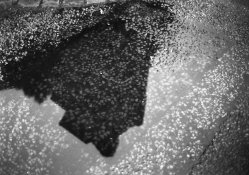Guys, I use Polypan F a lot. And I do mean a lot!
Some saying "DON'T BUY IT BECAUSE OF THE GRAIN".. Seriously? It is a great film... I have used it in studio, and around just shooting whatever I please, and it has never disappointed me yet. It's seriously inexpensive, and produces very rich tones, contrast, and a soft grain.
I've developed it in everything from D76, TMAX, ID-11, DekTOL, HC-110, Ilfosol-3, XTOL, Caffenol-C, Melonal, Glassenol, Rodinal.. And some of them even mixed with each other..
 I've always believed that the object of photography was to produce the best images possoble. I don't see how this can be done with a film that only produces "decent" results. It seems like this film is just a waste of valuable time and effort.
I've always believed that the object of photography was to produce the best images possoble. I don't see how this can be done with a film that only produces "decent" results. It seems like this film is just a waste of valuable time and effort.
Curious, why is it that some shoot with a digital camera and apply a bunch of filters to decrease the saturation, add scratches and dust marks, plus large grain and colour shifts...
The film is just a means of capturing said image, but the person behind the camera is the one that is helping to capture said, "Best possible" image.
Not trying to start a flame war, but why insult a good film, especially one that is very inexpensive so that you can literally buy a LOT OF IT and go out and excercise a camera that is +30 years old..
hell, you can blow through 5 or 6 rolls of the stuff in an hour and not feel guilty!

























